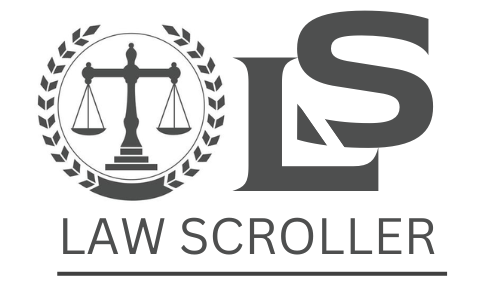Why this lawsuit matters for ordinary people
This is more than a legal fight among big institutions. It concerns abuse survivors, organizations (like churches and Scout councils), and how far liability can reach. The outcome affects how much survivors can recover, whether institutions get immunity, and how future abuse claims are handled across many nonprofits. Even if you’re not directly involved, this case sets legal precedent about accountability and protections in mass tort and bankruptcy settings.
Background: What is the the “Boy Scouts lawsuit”?

What’s it about?
In recent decades, thousands of people have filed claims accusing the Boy Scouts of America (BSA) — as well as affiliated organizations — of sexual abuse that took place decades ago during scouting activities. These claims encompass allegations involving troop leaders, volunteers, and others.
Because of the massive number of claims and the financial exposure, BSA filed for Chapter 11 bankruptcy in 2020 to reorganize and handle these claims in a structured way.
As part of the bankruptcy plan, BSA (together with insurers, local councils, chartering organizations, etc.) negotiated a global settlement creating a Victims Compensation Trust / Settlement Trust of about $2.46 billion to resolve abuse claims.
Critically, under that settlement, many non-bankrupt entities — such as local Scout councils, churches that charter units, and insurers — were to receive releases from future lawsuits in exchange for contributing to the settlement fund. That means once the settlement is approved, many survivors might not be able to sue those non-bankrupt parties anymore.
Some survivors and insurers objected to those releases (arguing they’re unfair or illegal under new law). The objections have resulted in appeals, motions, and court challenges.
Who’s affected — who can claim, who’s impacted
Who may qualify (or already claimed)
- Individuals who say they were sexually abused as minors while participating in Boy Scouts, Scout units, or related activities.
- Survivors who filed claims in the bankruptcy process (by the deadline set in 2020) were eligible.
- Claimants whose abuse is supported by documentation, evidence, and/or that fit into the “matrix” (a compensation framework used in the settlement) for assessing severity.
Who is affected more broadly
- Non-bankrupt entities like local Scout councils, churches, and insurers. Whether they keep liability depends on whether the settlement’s releases are upheld.
- Insurance companies that did not settle or contribute may resist obligations or appeal.
- Survivors who did not file claims by the deadline may have lost their chance through the settlement process, although in some states changes to statutes of limitation have happened.
In short: most of the active claimants are survivors who properly filed claims in the bankruptcy or connected to the settlement trust.
Timeline of key events
Here’s a simplified timeline to help make sense of it:
- February 2020 — BSA files for Chapter 11 bankruptcy to address mass sexual abuse claims.
- May 2020 — Court sets deadline for survivors to file claims (November 16, 2020) in the bankruptcy case.
- September 2022 — The bankruptcy court approves the $2.46 billion settlement and confirms the reorganization plan.
- April 2023 — BSA’s bankruptcy plan becomes effective; the Trust begins reviewing claims and paying some survivors.
- February 2024 — The U.S. Supreme Court lifts a pause and allows the settlement to proceed after appeals tried to block it.
- May 13, 2025 — Federal appeals court (Third Circuit) largely rejects appeals of the bankruptcy plan and upholds the settlement.
- Mid-2025 (now) — Trust continues claim reviews, payments, and litigation against non-settling insurers. A portion of funds (≈ $1.4 billion) remains in escrow until appeals are fully cleared.
What’s at stake
Money & compensation
- The settlement fund is $2.46 billion, intended to compensate survivors.
- How much an individual survivor gets depends on severity, duration, location, evidence, and where they fall in the “matrix” levels.
- Some survivors have already received partial payments (including an “expedited” option), though full payouts may take years.
- Additional funds may come from litigation against non-settling insurers, once appeals allow that to proceed. That could increase the pool of money available.
- However, the total claims exceed original estimates: the total liability is now estimated at over $7 billion, meaning the fund may not cover full value of all claims fully.
Legal & accountability
- Whether non-bankrupt organizations (churches, local councils, insurers) obtain immunity from further lawsuits depends on whether courts uphold the releases granted in the agreement.
- Some objectors argue the plan’s “third-party releases” (immunity for organizations that weren’t bankrupt) violate law, especially in light of recent Supreme Court rulings limiting such releases.
Impact on survivors
- Delays in claim processing and appeal uncertainties cause emotional hardship for survivors waiting for resolution or payment.
- The uncertainty about how much will ultimately be paid (shortfall risk) means survivors may receive less than their full valuation.
What to watch next (case update, settlement, deadlines)
- Finalization of appeals: Appeals must be fully resolved before some escrowed funds (like the $1.4 billion held back) can be released and paid out.
- En banc review request: Some objectors have asked for a rehearing of the appellate court’s decision by the full court. If granted, it may delay things further.
- Supreme Court involvement: If someone petitions the Supreme Court (writ of certiorari), and it takes the case, that could introduce further delay.
- Litigation vs. non-settling insurers: Once appeals are clear, lawsuits against insurers who haven’t yet paid will move forward. The outcome may add funds to the trust.
- Payment rounds: Further “second round” payments are expected, though timing depends on appeals. The trust hopes to resolve all claims by end of 2026.
- Shortfall risk and adjustments: If total claims exceed available funds after all contributions, payments may be pro rata (scaled down) or subject to adjustments.
- State statute changes: Some states have changed laws regarding when claims can be filed (statute of limitations), potentially enabling more survivors to be eligible in certain states. (Example: Iowa passed a measure to allow claims regardless of when abuse occurred in Boy Scouts context.)
So, it’s not over — many moving pieces ahead.
FAQs (simple questions & answers)
Am I still eligible to claim?
Possibly — but only if you filed a claim in the 2020 deadline or qualified under the settlement process. If you missed the filing window, the settlement might bar you from participating. Some state law changes may help, but it’s complicated.
Do I need a lawyer?
Yes, it’s strongly advisable. The process involves submitting documentation, interpreting the plan, appeals, and potentially post-settlement issues. A lawyer with experience in abuse / bankruptcy claims is best.
When will decisions or payments happen?
Some payments already began in 2023. Additional rounds are expected, but full resolution could stretch into 2026 (or longer) depending on appeals and litigation.
Can I still sue a church or local council for what happened?
In many cases, no — the settlement’s “non-consensual releases” grant legal immunity to many non-bankrupt entities, if the courts uphold them. Some objectors challenged this, but appeals have mostly maintained the releases.
Will I receive full compensation for what I claimed?
Maybe not. Because the total value of claims now exceeds the initial fund and some insurers may refuse to pay, survivors may get less than their claim’s full value. Pro rata reductions or scaling back might happen.
Why are appeals still going on if settlement was approved?
Some survivors and insurers objected to aspects of the settlement — particularly the immunity for non-bankrupt entities — and have appealed. Courts are resolving whether those objections are valid or too late.

 Oliver Johnson is LawScroller’s Senior Legal Correspondent specializing in civil litigation, class actions, and consumer lawsuit coverage. He breaks down complex settlements and court decisions into clear, practical guidance for readers.
Oliver Johnson is LawScroller’s Senior Legal Correspondent specializing in civil litigation, class actions, and consumer lawsuit coverage. He breaks down complex settlements and court decisions into clear, practical guidance for readers.